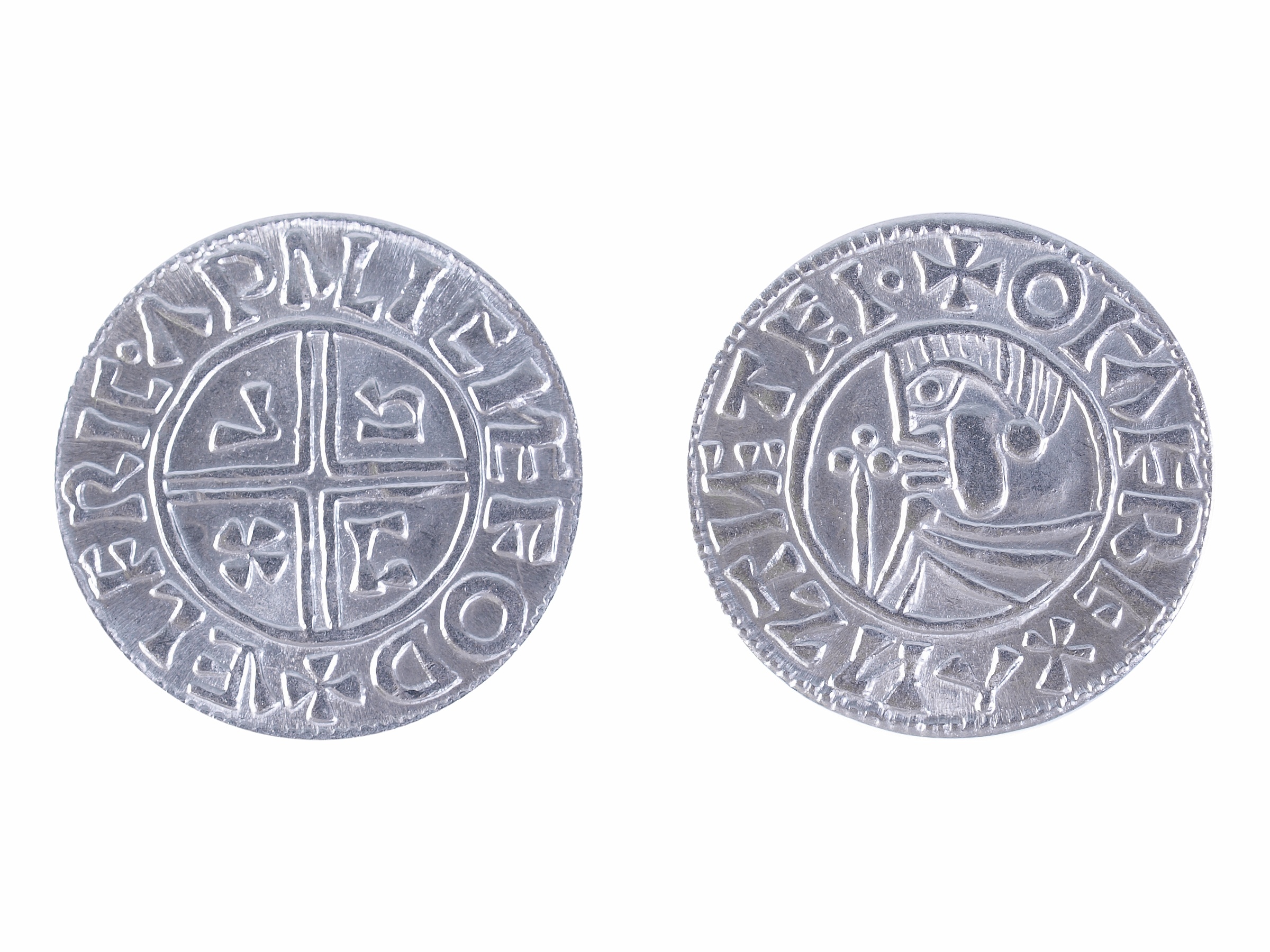
Comments I’ve accumulated from a few other books fit well with the previous post Background on Viking Age – money, trading centers – 2 of 5
In Vikings: Raiders, Traders, and Masters of the Sea on page 99, Rodney Castleden explains much of the trade carried out by Vikings was in barter. For example, swapping furs for linen or pottery.
Eventually bullion became a store of value. This would have been in the form of silver coins usually, with gold being used sometimes. The coins had value because their precious metal not because of the particular coin.
This is a different framework from today where coins and bills have value because the government says so. It would be extremely rare to encounter a coin today that has precious metal equal to its face value. To further the contrast if you happen to have an old coin that has lots of silver in it (that would be dimes, quarters, half dollars, and dollars dated 1964 and earlier in the United States) their value is a large multiple of the face value. If those coins happen to be in fairly good condition their value is an extreme multiple of their face value.
The contrast in the Viking Age and medieval era is coins had value because of the precious metal they contained. Thus the bullion value was the means of exchange. As an aside is also a store of value and a unit of measure. That is the definition of money.
The large volume of Islamic coins and eventually Frankish and English coins converted the Viking economy from barter into a bullion economy.
As my previous article mentions, the next transition was to foreign coins and then domestically minted coins.
Book says that Guthram (in 878 he was baptized as Athelstan) was the first Viking ruler to set up his own mint in England. He and the Viking kings ruling in York all issued their own coins.
Hordes
On page 104 of Vikings: Raiders, Traders, and Masters of the Sea, Rodney Castleden also explains there were no banking facilities, no safe way to invest funds, no way to store wealth except in precious metals. And there was no safe way to store the bullion.
So, people buried their wealth in the ground. Those who were killed, died, captured and were sold off as slaves, or who forgot the tree behind which the silver was buried, lost out on their wealth.
The misfortune of those people results in the huge number of hoards in Scandinavia.
Text says there are a thousand hoards of silver and a few hoards of gold that have been discovered in Norway, Denmark, and Sweden.
There have been two large hoards found in areas colonized by Vikings. One, the Cuerdale hoard, had 7,500 silver coins along with a large volume of ornaments and bullion. Total silver in that hoard is 88 pounds. It was discovered in 1840.
Another hoard in Galloway was 2 spades deep with another hoard below it. Not only was there a lot of silver in it, it contained gold, large crosses, broaches, glass, textiles, enamel. Source of items was around the medieval world: Irish, Carolingian, Frankish, central European.
In The Sea Wolves: A History of the Vikings, Lars Brownworth explains the rich people in an area might store their bullion in a nearby monastery. I’m guessing was considered safer than storing in your castle or burying it where all the peasants could see the location.
Well, actually, the monastery would have been a safer place until the Vikings figured out there was routinely a massive amount of wealth stored in any monastery they could find.
In addition, the wealth donated to the church by the well-to-do in an area would obviously be stored in the monastary, apart from the precious metals used in ornaments, communion ware, and embedded in the covers of bibles.
Author calls monasteries “proto banks” because of their semi, sorta’ safe deposit role.